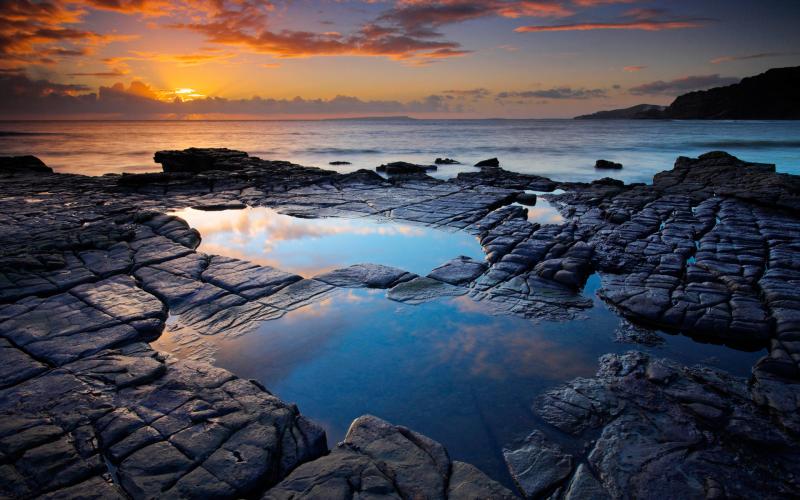
The grim reality of clinging to life on the shore for animals and algae was expertly described to Coastwise members by marine biologist John Hudson.
The steepness, tidal movement, wave impingement and temperature are some of the factors which affect the life on a shore. Species can be highly specialised, like channel wrack. This upper shore algae can survive 90% dehydration, but can reydrate within 25 minutes. It can survive for 8 days out of water, but if submerged for a full day will die.
Rock pools are always fun to look at, but can be a harsh environment for the inhabitants, with significant variation in oxygen and carbon dioxide content, temperature, acidity/alkaninity and salinity when exposed twice a day. In deeper water, light penetration reduces sharply with depth – 20m below the surface, there's only 10% of the surface light intensity. Responding to this, algal pigments have different chlorophyll types with different light absorbtion spectra to allow them to live in different levels of light.
John explained the phenomenon known as "red tide", and why it's not a good idea to eat seafood exposed to this. The red colour is caused by a dinoflagellate called Gonyaulax, which contains a toxin. This is concentrated by filter feeders like shellfish, and the result is very bad for humans !
Shore animals need good defences, and among the many examples that John described is the limpet, a grazer which ranges over a square metre or so. They are vulnerable to starfish, which try and lever them off with their tubule feet. The limpet is able to clamp down very hard on these, literally "stamping on the feet" of the enemy.
The shore is a truly challenging place for the inhabitants, but when you know what's going on, it's fascinating !

